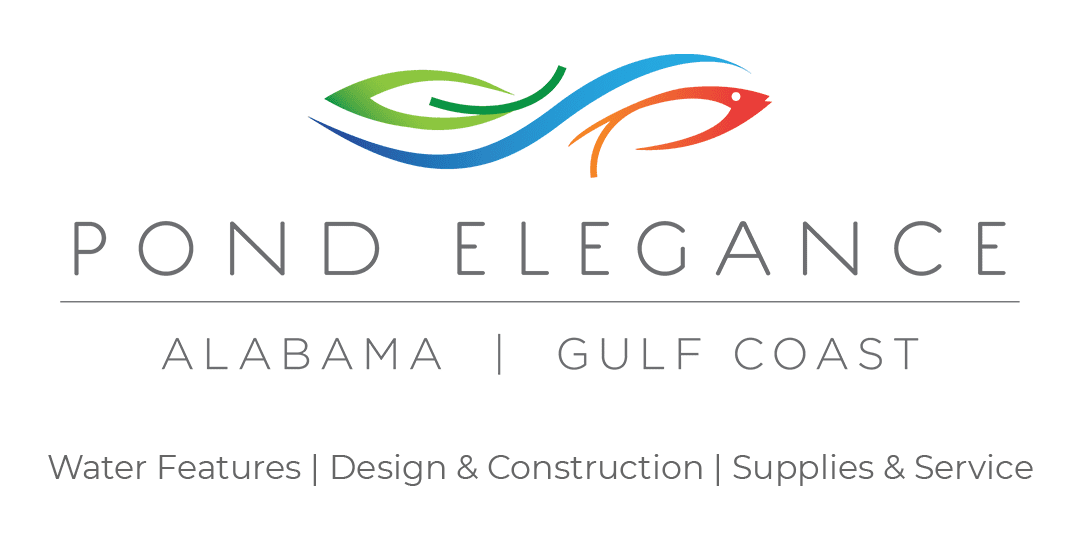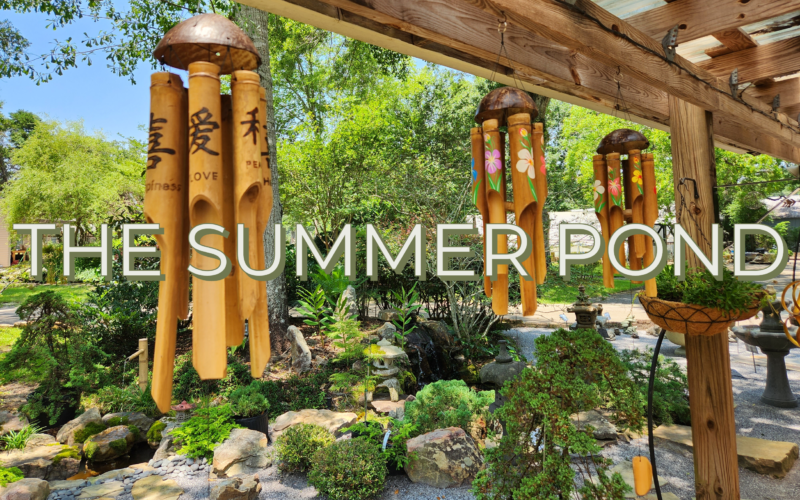
The local news stations on the Gulf Coast have announced that hurricane season is upon us. Yes, the Gulf of Mexico is ready to play roulette with her shores. Preparing for large storms of spinning wind, rain, and boiling air pressure is the first sign of summer on the Gulf Coast.
Gulf Coast summers tend to be very hot and even more so humid. Typical temperature highs can range from the upper 80s to mid-90s.
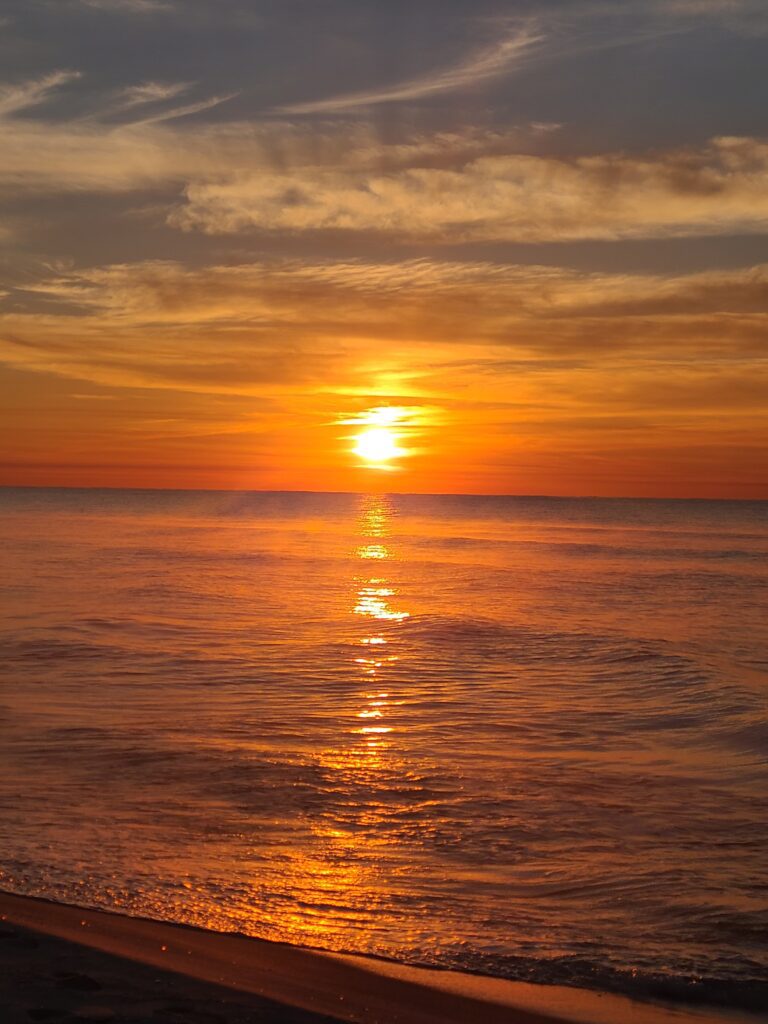
Heat like that makes time feel like it slows down. Not much can be done when there is a consistent threat of rain in the afternoon. You have to love nature’s gift of time. Most days we’re all forced to stay indoors during the heat of the day. Even though a heavy downpour followed by the scorch of the sun makes for a pressure cooker-like experience, gardens thrive.Â
Still, these conditions can be just as hard on your water features as they are on you.
It’s all worth it during the hum of the evening. The fireflies light up our tree lines. Kids are out of school to discover the joys of their backyards. Beach days, bike rides, and fishing trips fill up our calendars. Our summer outings are great, but home is where the parties happen.Â
For instance, Memorial Day has passed. Did you kick off the unofficial start of summer with a barbecue by your water’s side? If not, June 21st, the official start of the summer season, is still a few weeks away. There is so much time left to enjoy food, family, and your backyard waterscape.Â
Keep your ponds, fountains, and waterfalls running smoothly with seasonal preparations, regular maintenance, and daily attention.
Did we mention rain?
Your pond summer experience starts with the increase in rain. June, July, and August are the wettest months of the year here. There is at least a 39% chance of rain nearly every day of those months. Rain can be both a friend and a foe to your koi pond.Â
Rain is the ideal source of water for a routine water change. You should change 10% to 20% of your pond’s water every one to two weeks. Water changes contribute to the dilution of excess nitrates and phosphates. A good downpour can also replenish water levels as the summer sun increases evaporation rates. Free of the chemicals used to treat municipal utilities, rainwater is the ideal element for our fish and plants.
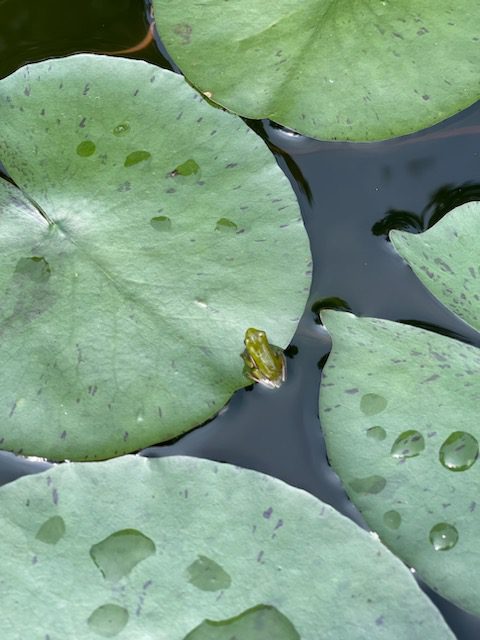
Rainfall creates surface agitation which helps oxygenate the pond. This is great for the Gulf Coast! Warm water holds less oxygen than cooler water and our ponds get warmed up pretty fast through spring. Our ponds don’t cool down until about November, just as hurricane season ends. Adequate oxygen levels are crucial for the survival of your koi and goldfish.
There is the good about rain, now here is the bad. Well, not bad per se, but things to keep in mind to keep your water garden healthy.
Rainwater has an acidic pH of 5.6 due to carbon dioxide in the atmosphere. If your pond’s pH is too high, the rain can help naturally lower it to a more suitable level for koi. More than likely, your pond pH is already in the ideal window of 6.5 to 8.5. Our excessive, prolonged rainfall can cause a drastic pH drop. Check your pH after a good rain. Your fish may depend on it.
Looking at your fish, check for signs of fins pinned to their bodies, as well as slow and deep swimming only. Not sure how to check your pond’s pH? Visit the Pond Elegance retail store to grab an easy, at-home kit.
Next, think about where your water feature is situated on your property. Is it downhill from your garden? Depending on the surrounding environment, rain runoff can introduce contaminants into the pond.
Pesticides, fertilizers, and other pollutants could find their way into your waters without proper planning and design. If you’re unsure about a road too close or a farm upwind, call the professionals at Pond Elegance to have your water feature assessed and maintained for your specific layout needs.
Don’t Forget the Heat!
When it isn’t raining on the Gulf Coast, the sun is making us wish that it were. Our koi are cold-blooded animals. Their metabolism, and overall health, are influenced by the temperature of their environment. Keep an eye on the temperature of your pond’s water.
The warmer the waters, the faster your koi’s metabolism. This increased metabolism can enhance their growth, appetite, and overall activity level. Change their food and feed frequency to keep your koi growing, glowing, and happy. Pond Elegance carries an array of Blue Ridge Koi and Goldfish food. Choose a food formulated with your fish’s health, color, and size in mind.
Remember, the warmer the water, the less oxygen is being dissolved. It’s always critical to ensure your feature has adequate aeration and water circulation. This is especially important during the hot summer months. You can achieve this in a few different ways, agitators, plants, and good design.
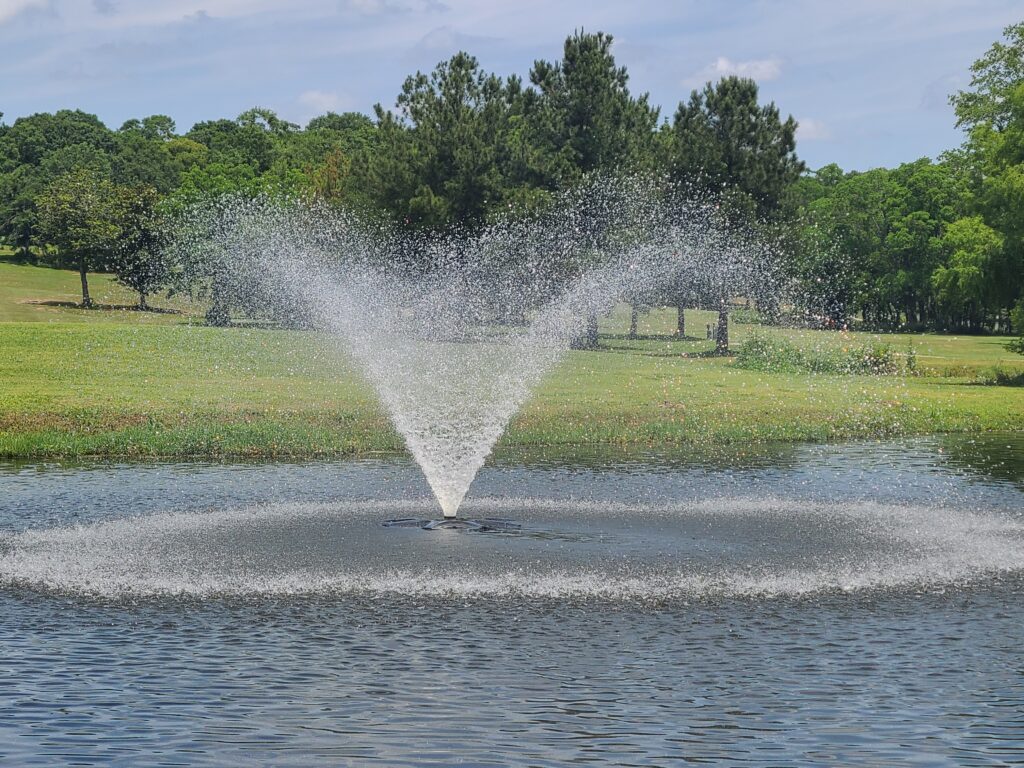
Agitate your water’s surface with a fountain, waterfall, or spitter. Be sure your feature’s pump size is suitable for your pond’s proportions. You should know the length, width, and depth of your pond to determine how many gallons it holds. Water pumps are sized by gallons per hour (GPH). For optimal aeration, your pump should be able to circulate all of your pond’s water within two hours.
If your pond is 10 feet wide, 10 feet long, and 2 feet deep, you have about 1500 gallons of water. Your pump must be at least 750 GPM.
In addition to your perfectly paired water circulators, aquatic plants can contribute to natural aeration. Water lilies and other emerging and floating plants should cover 60% of your pond’s surface. Plants release oxygen during photosynthesis. Furthermore, floating plants like water lettuce or water hyacinth provide shade to your pond and fish, helping to regulate water temperature and reduce algae growth.
Control the Algae
The summer sun truly feels like it’s working overtime on the Gulf Coast. The intense shine and warm water temperatures work with the organic debris in your pond to feed algae. Some algae are good and are a regular part of your pond’s ecosystem. That’s the algae that live on your liner, rocks, and planters.
The bad algae bloom and float in your water, or worse, turns your pond completely green. You need to control the algae in your pond because it’s a threat to your fish and plant life.
First, algae isn’t a pretty sight. The excessive growth of algae can reduce water clarity. Visually, it is unappealing. It’s also harder to assess your fish for signs and stress and monitor activity levels when you can’t see them.Â
Next, algae add to the depletion of oxygen in your water. Algae consume dissolved oxygen as they decompose. The sun threatens the water’s oxygen by day, and algae are the oxygen threat by night. Again, low oxygen levels are harmful to your koi and goldfish.
Also, excessive algae growth can disrupt the balance of an ecosystem in a pond. Algae can outcompete other plants for nutrients and sunlight, potentially suffocating or inhibiting the growth of beneficial aquatic plants. This imbalance can impact the overall biodiversity and health of your pond’s ecosystem.
Controlling algae bloom doesn’t have to be complicated. All it takes is a combination of preventive measures and management techniques.
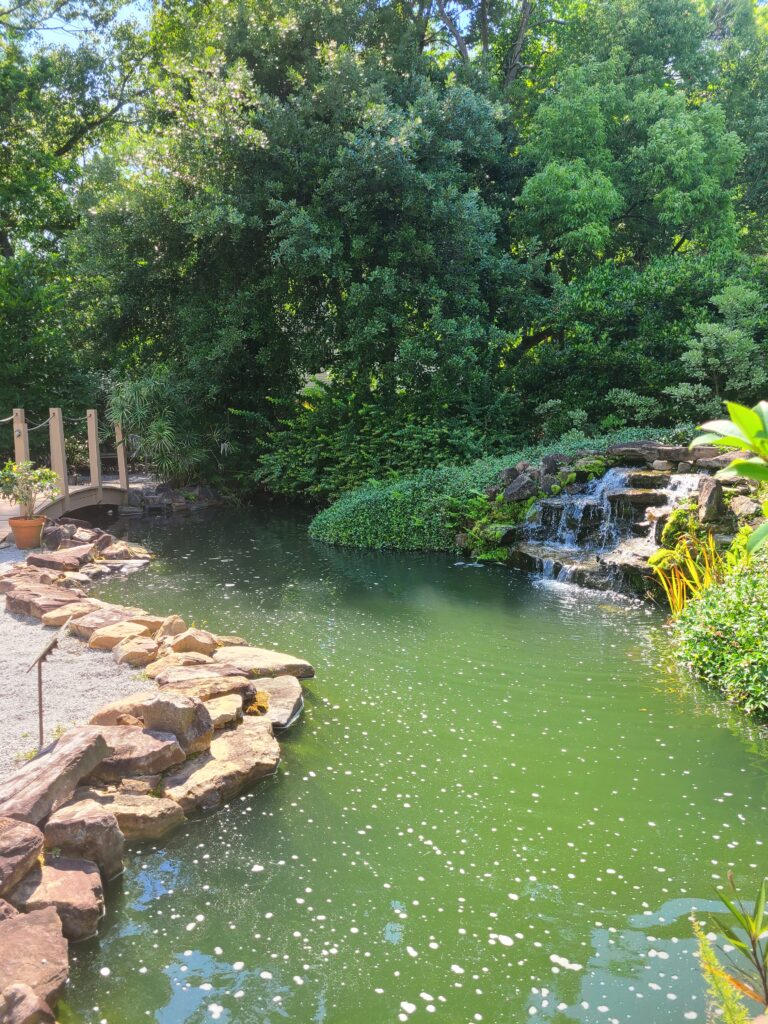
Algae thrive on nutrients, particularly nitrogen and phosphorus. To limit excessive algae growth, minimize the use of excess nutrients in and around the pond. Avoid overfeeding fish. Uneaten food contributes to nutrient buildup. Regularly remove decaying organic matter, such as leaves and pinecones, from the pond. Decomposing organic material releases nutrients that can fuel algae growth.
A well-designed filtration system plays a vital role in controlling algae. Install an appropriate pond filter that matches the size of your pond. A good filter will help remove excess nutrients, organic matter, and suspended particles from the water. Ensure proper maintenance of the filter, including regular cleaning or backwashing as recommended by the manufacturer.
If you’re unsure about your filter system or need some help with maintenance, the professionals at Pond Elegance are able to assess your situation and create a custom plan for your pond.
Like nutrients, algae require sunlight to photosynthesize and grow. Reducing the amount of sunlight bathing the pond can help control algae. The same plants that contribute to your pond’s aeration will shade your water and protect it from the sun’s extreme rays. You can also use umbrellas, netting, and non-aquatic plants on the southern end of your pond, for shade.
Additionally, introducing beneficial bacteria products specifically designed for pond use can help control algae. These bacteria help break down organic matter and reduce nutrient levels. This creates a less favorable environment for algae to thrive. There are many products to choose from when dealing with water clarification. Talk to a professional about what and how much to use for your specific pond’s needs.
Keep in mind, maintaining a balance in the pond ecosystem is essential. Avoid excessive use of chemicals, as they can disrupt the natural balance and harm beneficial organisms. Regular monitoring, consistent maintenance practices, and a proactive approach to managing nutrient levels and sunlight exposure will go a long way in preventing and controlling algae blooms in your pond.
Weather the Storms
In Mobile, Alabama where we are based, the threat of a hurricane means strategic preparation. Hurricanes and other severe thunderstorms bring high wind and flooding. The aftermath of a storm can be dangerous as well. Downed trees and powerlines can change access and availability for days at a time. Preparing your pond for a hurricane is important to minimize potential damage and ensure the safety of your koi and goldfish.
Secure loose objects that could end up in your pond. Loose and lightweight objects become projectiles in windy storms. This includes decorative items, furniture, and potted plants. Store them in a secure location until the storm passes. If you choose to use a net over your pond to protect it from debris, fasten the net in a way that will weather the storm. If there is flooding, a net may be the only way to keep your fish confined.Â
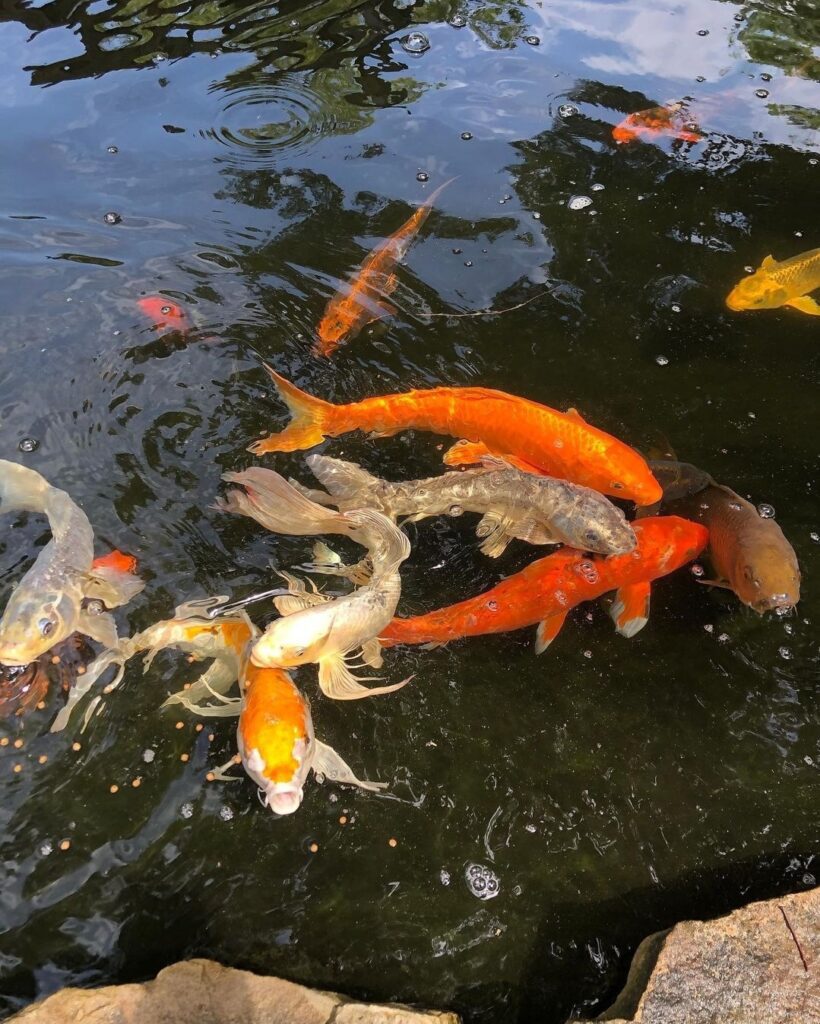
Be sure to trim surrounding trees and plants. Prune any overhanging branches or limbs that could potentially fall into the pond. Consider trimming trees on your property that have the potential to block access to your yard and pond as well.Â
Protect the electrical equipment that keeps your pond healthy. Exposed pumps, filters, and fountains should be disconnected and properly stored to avoid loss during the storm.
Consider using a generator in the case of a power outage. When using a generator, instead of powering your normal setup, have an aerator on hand. An aerator uses far fewer amps than your usual pond gear. This will leave plenty of play on your generator to power the necessities of your home.Â
Finally, keep a few things handy. Keep a de-chlorinator on hand. Dechlorinator is for large water replenishment. Municipal water has enough chlorine to kill your fish. Also, keep baking soda on hand as well. If heavy rain occurs, you may need it to normalize the pH in your pond. Rain can cause your pond to become acidic, remember?
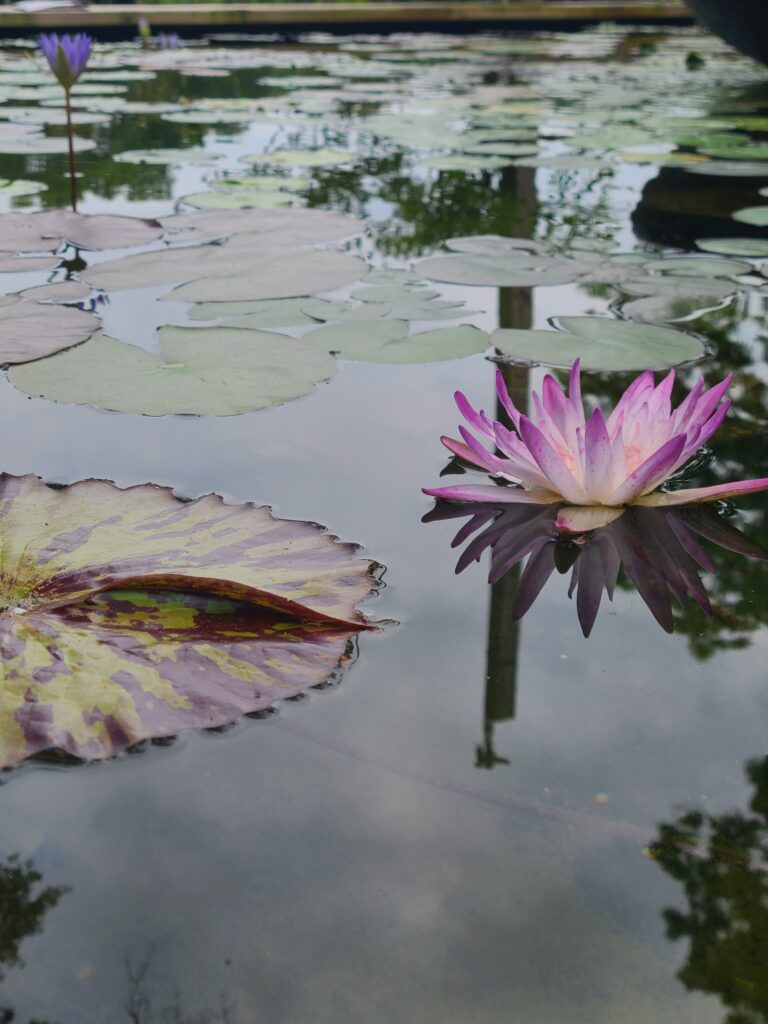
The summer pond is much like the spring pond, but the heat is on and the rain is imminent. Like the importance of knowing the size of your pond, knowing how it’s situated on your property is as well. It can be all the difference in maintaining a healthy ecosystem through rain, heat, and heavy winds.Â
If you’re on the Gulf Coast, you don’t have to prepare on your own. Pond Elegance has been the leader in residential and commercial ponds and water features for over 30 years. We have prepped, maintained, and saved a lot of water features in that time. We’ve survived a few storms as well.Â
Visit us at 3210 Dawes Rd. Mobile, AL 36695 to see our ponds and shop at our retail store. For maintenance and safety questions, call us at (251)-639-2546.Â
